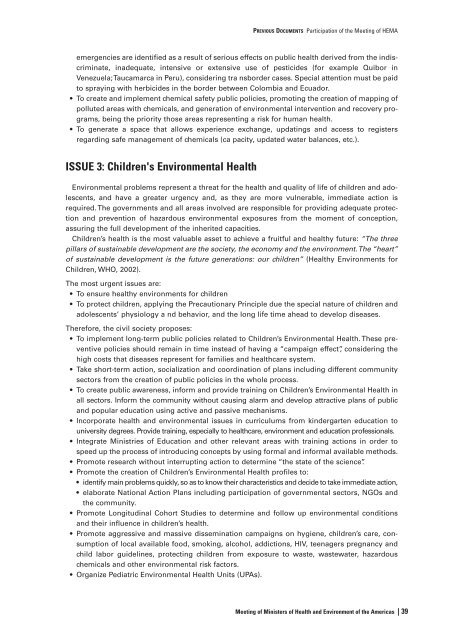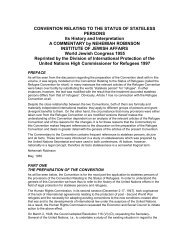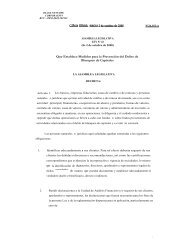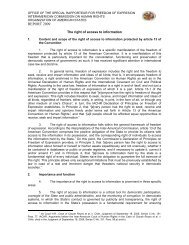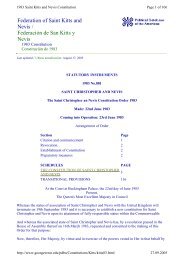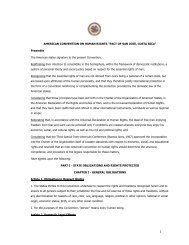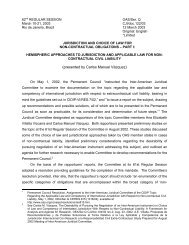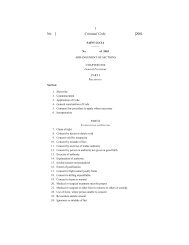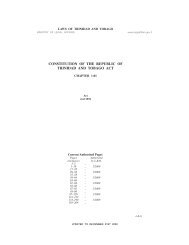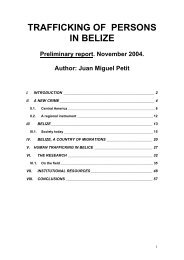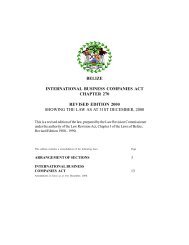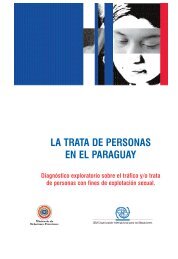(HEMA) Initiative. - OAS
(HEMA) Initiative. - OAS
(HEMA) Initiative. - OAS
You also want an ePaper? Increase the reach of your titles
YUMPU automatically turns print PDFs into web optimized ePapers that Google loves.
PREVIOUS DOCUMENTS Participation of the Meeting of <strong>HEMA</strong><br />
emergencies are identified as a result of serious effects on public health derived from the indiscriminate,<br />
inadequate, intensive or extensive use of pesticides (for example Quibor in<br />
Venezuela; Taucamarca in Peru), considering tra nsborder cases. Special attention must be paid<br />
to spraying with herbicides in the border between Colombia and Ecuador.<br />
• To create and implement chemical safety public policies, promoting the creation of mapping of<br />
polluted areas with chemicals, and generation of environmental intervention and recovery programs,<br />
being the priority those areas representing a risk for human health.<br />
• To generate a space that allows experience exchange, updatings and access to registers<br />
regarding safe management of chemicals (ca pacity, updated water balances, etc.).<br />
ISSUE 3: Children's Environmental Health<br />
Environmental problems represent a threat for the health and quality of life of children and adolescents,<br />
and have a greater urgency and, as they are more vulnerable, immediate action is<br />
required. The governments and all areas involved are responsible for providing adequate protection<br />
and prevention of hazardous environmental exposures from the moment of conception,<br />
assuring the full development of the inherited capacities.<br />
Children’s health is the most valuable asset to achieve a fruitful and healthy future: “The three<br />
pillars of sustainable development are the society, the economy and the environment. The “heart”<br />
of sustainable development is the future generations: our children” (Healthy Environments for<br />
Children, WHO, 2002).<br />
The most urgent issues are:<br />
• To ensure healthy environments for children<br />
• To protect children, applying the Precautionary Principle due the special nature of children and<br />
adolescents’ physiology a nd behavior, and the long life time ahead to develop diseases.<br />
Therefore, the civil society proposes:<br />
• To implement long-term public policies related to Children’s Environmental Health. These preventive<br />
policies should remain in time instead of having a “campaign effect”, considering the<br />
high costs that diseases represent for families and healthcare system.<br />
• Take short-term action, socialization and coordination of plans including different community<br />
sectors from the creation of public policies in the whole process.<br />
• To create public awareness, inform and provide training on Children’s Environmental Health in<br />
all sectors. Inform the community without causing alarm and develop attractive plans of public<br />
and popular education using active and passive mechanisms.<br />
• Incorporate health and environmental issues in curriculums from kindergarten education to<br />
university degrees. Provide training, especially to healthcare, environment and education professionals.<br />
• Integrate Ministries of Education and other relevant areas with training actions in order to<br />
speed up the process of introducing concepts by using formal and informal available methods.<br />
• Promote research without interrupting action to determine “the state of the science”.<br />
• Promote the creation of Children’s Environmental Health profiles to:<br />
• identify main problems quickly, so as to know their characteristics and decide to take immediate action,<br />
• elaborate National Action Plans including participation of governmental sectors, NGOs and<br />
the community.<br />
• Promote Longitudinal Cohort Studies to determine and follow up environmental conditions<br />
and their influence in children’s health.<br />
• Promote aggressive and massive dissemination campaigns on hygiene, children’s care, consumption<br />
of local available food, smoking, alcohol, addictions, HIV, teenagers pregnancy and<br />
child labor guidelines, protecting children from exposure to waste, wastewater, hazardous<br />
chemicals and other environmental risk factors.<br />
• Organize Pediatric Environmental Health Units (UPAs).<br />
Meeting of Ministers of Health and Environment of the Americas | 39


